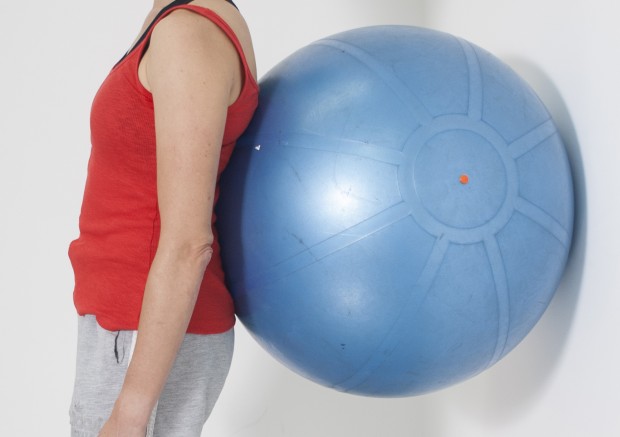Swiss ball wall squat
One example of an introductory squat variation that is good for learning good form is the ‘Swiss Ball Wall Squat’. Using a ball (rather than the traditional ‘wall sit’) has a number of advantages.

In particular it teaches you to maintain a ‘neutral’ or lumbar curve as you roll around the ball and down the wall. With the curve of the ball supporting your lower back you get direct feedback as you go through the movement and can feel when your back comes away from the ball.
Learning to maintain this ‘neutral’ spine is one of the most important technique points in any squat and becomes particularly important when you start to load the movement with weight. Working supported by the Swiss ball can also help to learn to engage the abdominal muscles and postural back muscles, by drawing the abdomen in and lifting the chest. This too teaches good habits that translate to safe free squatting movements.





